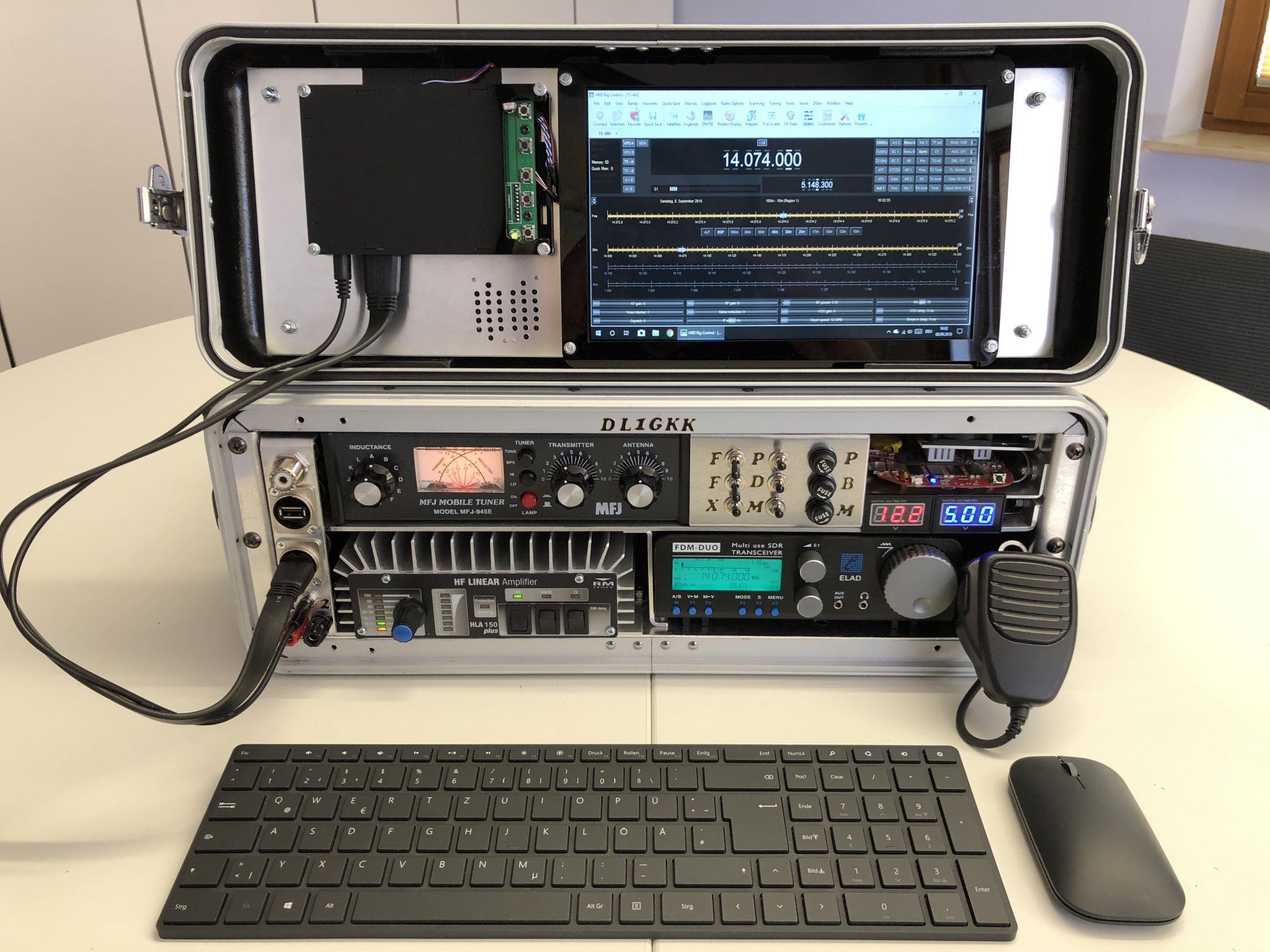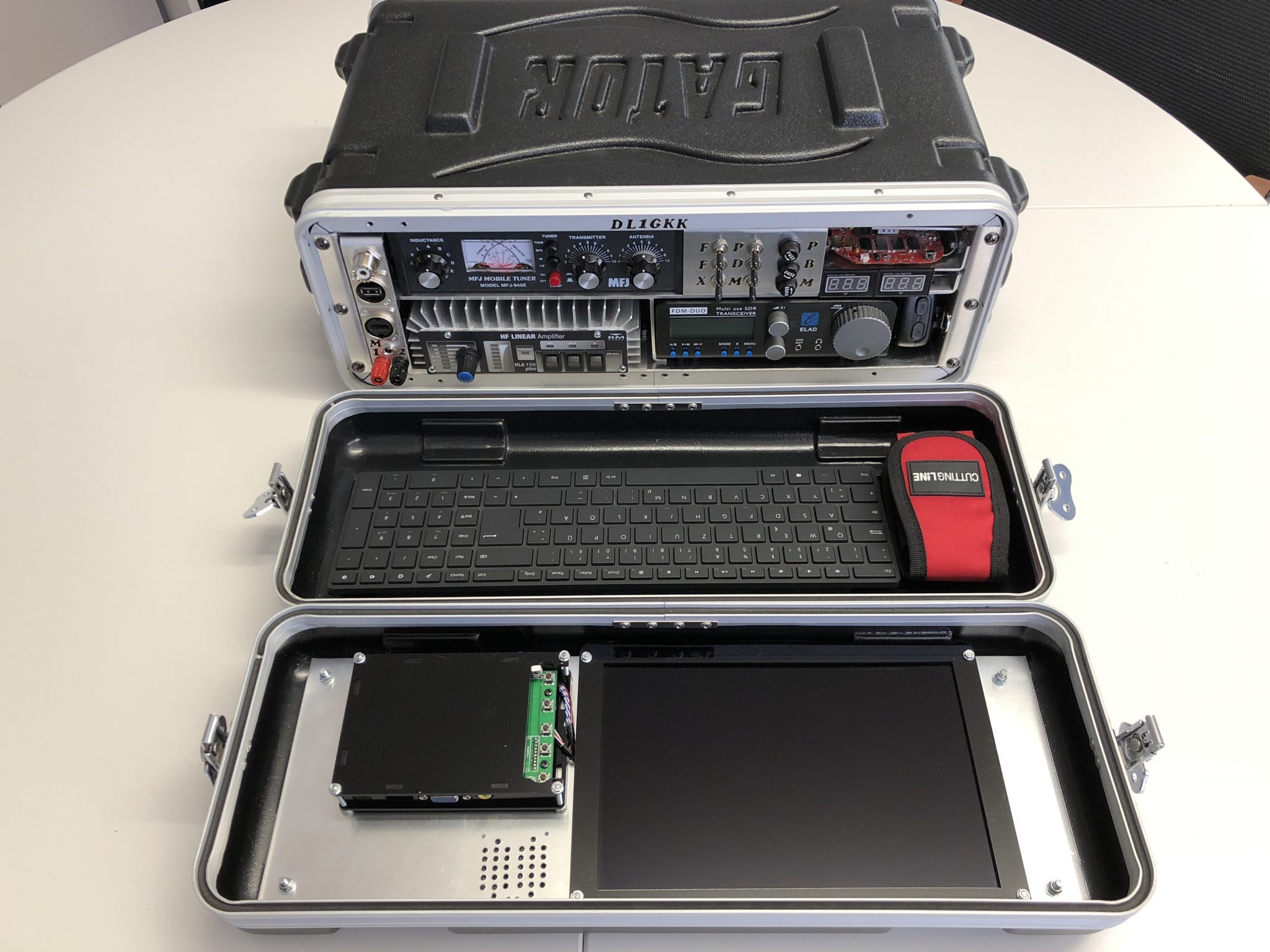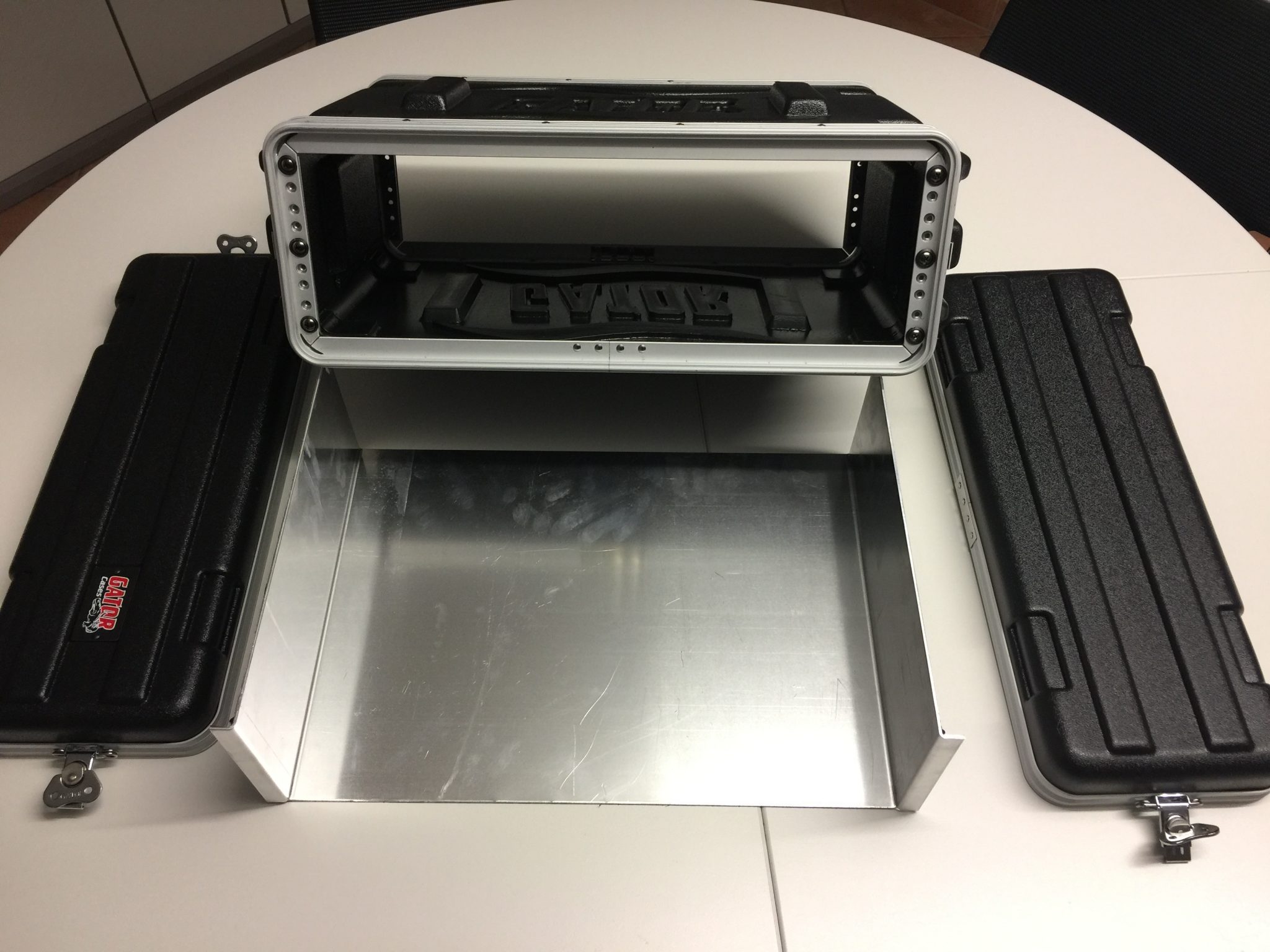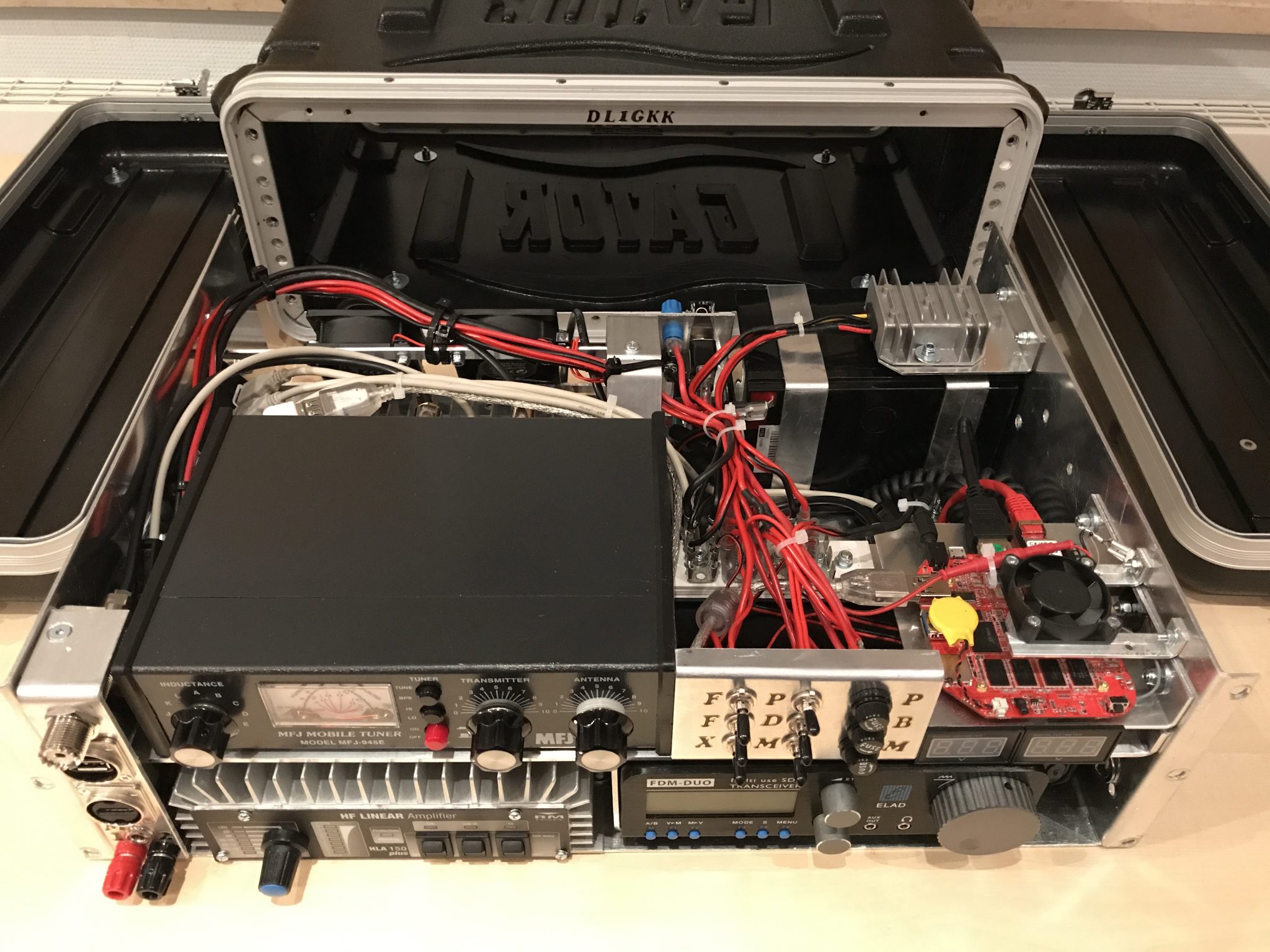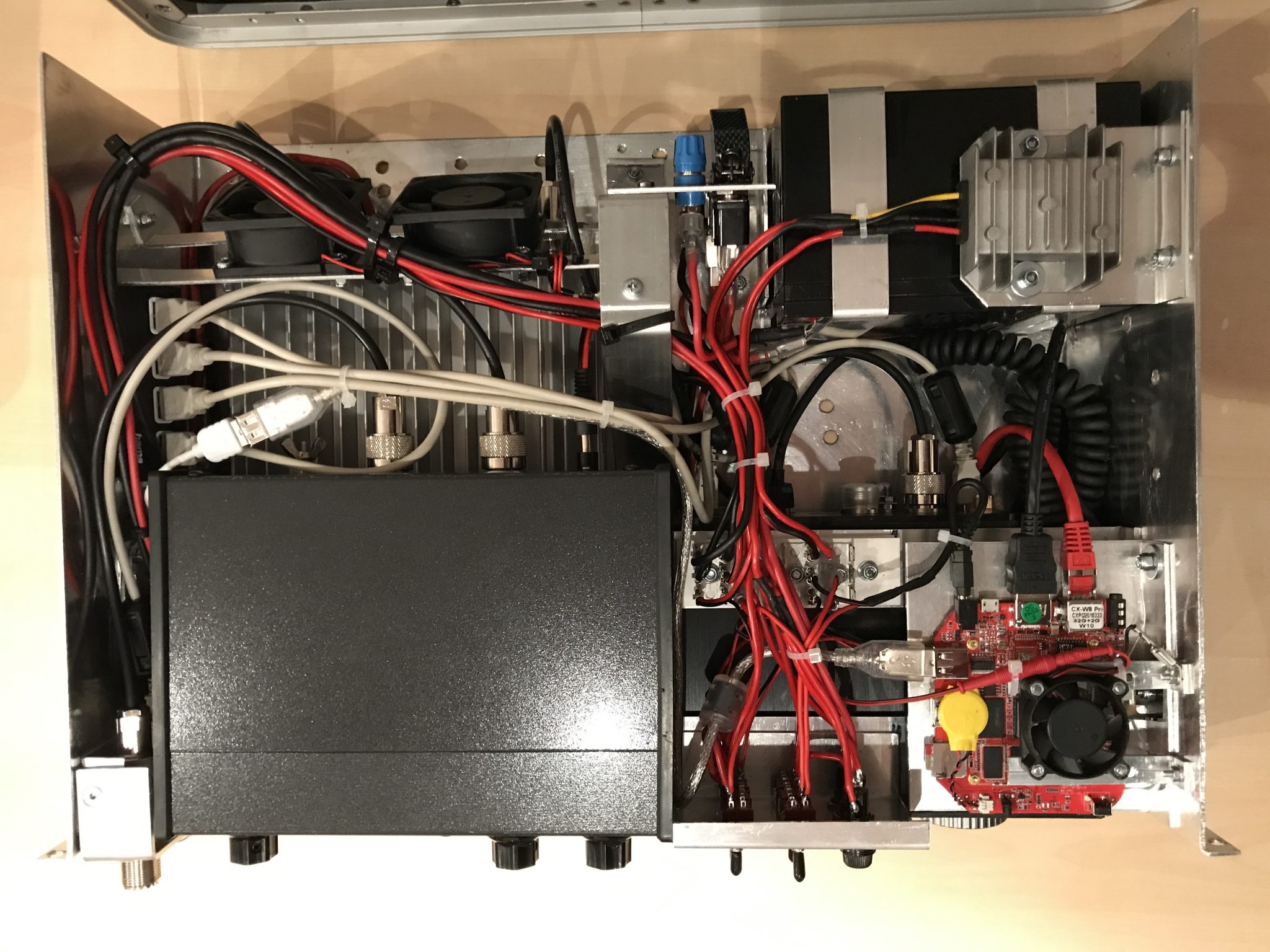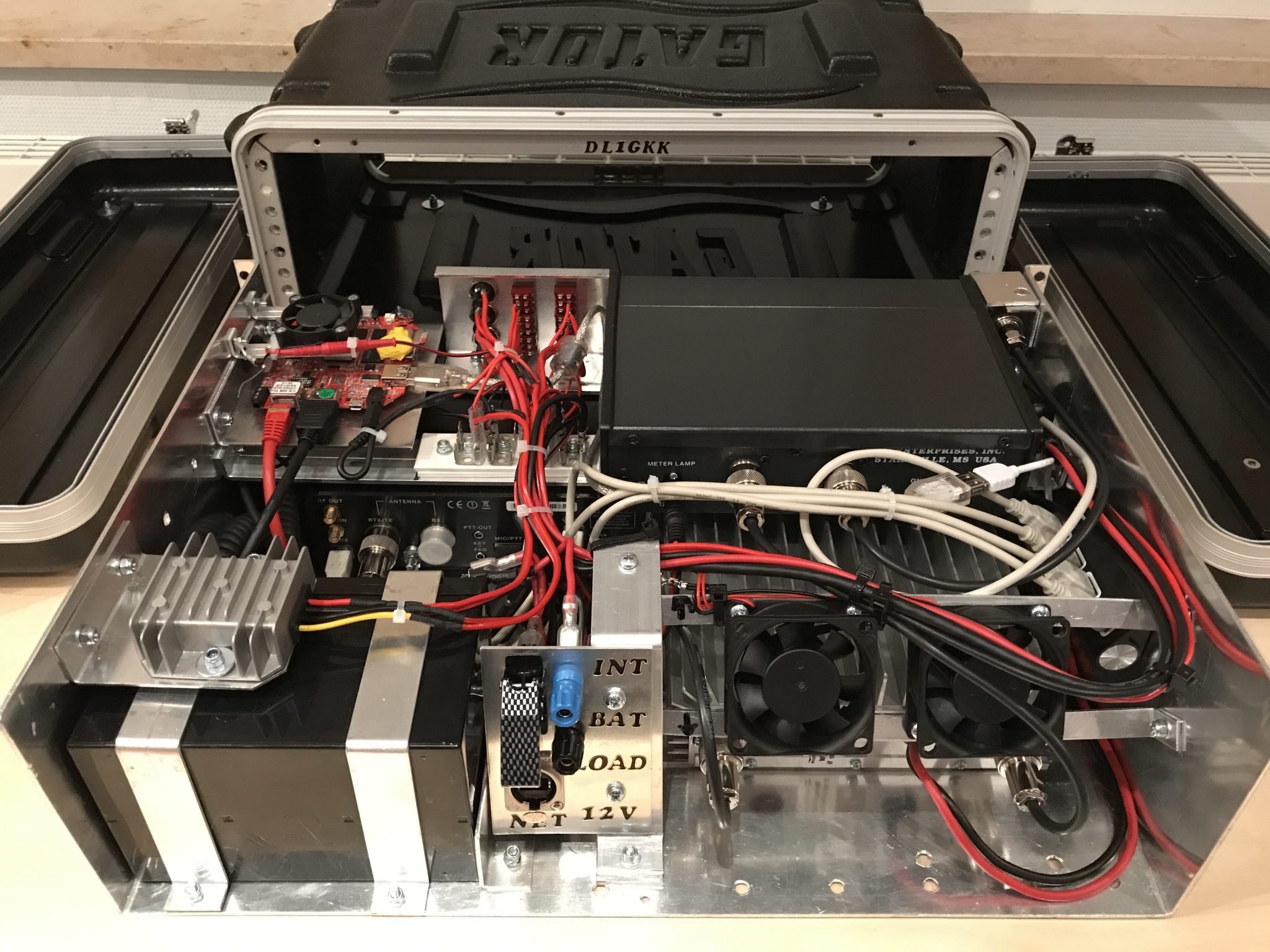Multifunctional, digital, compact amateur radio station for radio operation at home, on the road or in emergency radio applications.
Since i was licensed as an amateur radio operator in 1986, i have been enthusiastic about the possibilities of participating as an amateur in professional radio technology and scientific developments. Many devices are available as kits and software as open source.
The possibilities as an amateur radio operator are almost unlimited and the enumeration would go beyond the scope of this article. For more information please visit: https://de.wikipedia.org/wiki/Amateurfunkdienst.
My special interest is mobile amateur radio stations and digital radio technology. I started with a Lorenz teleprinter and built and programmed modems myself. I will never forget the sound of the mechanical teleprinter and the smell of hot oil ; -) Over time computers and modern modems became available and affordable. I used the Commodore C64 for a while, later PC’s and today mostly Mac’s. With the availability of modern radios, called SDR (https://de.wikipedia.org/wiki/Software_Defined_Radio), i had the wish again to build up a portable amateur radio station according to the current state of the art.
I use a Gator GR-3S – 3 HE 19″ rackmount with the dimensions of 197mm x 546mm x 445mm and a tare weight of 4,54 kg. For the installation on a table or vertically in the car i have mounted additional rubber feet on the underside.
The slide-in unit in the housing, crossbars and shelves are made of self-curved and cut-to-size 2 mm thick aluminium. The advantage of this is that all devices can be mounted in a stable manner and a stable ground is available. SDR radios and computers are sensitive to radio frequency. The stable ground and ferrite cores around the connecting cables have completely eliminated these problems.
The heart of the system is the 5 Watt HF SDR radio ELAD FDM DUO for shortwave (160 – 6m). A small and extremely powerful device with analog-to-digital converter, DSP, ARM processor, and a intern sound card for digital modes.
For digital modes of operation, 5 watts, for worldwide contacts, are usually completely sufficient. Sometimes it makes sense to apply a little more power, however. For this purpose, an additional power amplifier HLA 150 Plus was installed, which generates up to 150 watts of power. I chose the version without a fixed fan for space reasons. For cooling in transmission mode, two additional external fans were installed in the housing behind the power amplifier.
Digital radios and power amplifiers require an optimally tuned antenna. To use all available antennas at home and on the way i have installed the antenna matching device MFJ-945E. It fits perfectly to my other devices and has an illuminated display for power and standing wave ratio.
A TREKSTORE MINI PC W3 with Windows 10 Home is mounted to control the devices and the amateur radio software. A very small but powerful modern computer with Intel Atom x5-Z8300 processor (up to 1.84 GHz, 2 MB Intel Smart-Cache). To avoid heat problems, i removed the housing and mounted the PC directly on the aluminum plate. For the improvement of the cooling i added additional cooling fins and a small fan. I used a Raspberry PI3 for my first attempts, but it soon became clear that a Windows PC is much more compatible to the hardware i use and that there is more amateur radio software for it. It is also perfect for a mobile office, e. g. in the car.
I use a Designer Bluetooth keyboard and mouse from Microsoft. For transport, the keyboard and mouse are stored in one of the two covers of the box. HDMI and display power cables can also be stowed there. So everything is in one box.
The display is done on a SunFounder 10.1 inch IPS HDMI HD 12 volt LCD monitor with a resolution of 1280×800 pixels. It is installed in the second cover of the box. Perfect for transport but also for use on the box. The edge of the cover also acts as sun protection.
The internal power supply is realized with a 12 volt and 5 volt bus system. For 5 volt i use a DROK DC-DC step-down converter 12/24 volt to 5 volt (5A/25W). To check the voltage i use a DROK DC 2.5-30 volt voltmeter red for 12 volt and blue for 5 volt. As a backup battery and for normal QRP operation i have integrated a Panasonic LC-RA 1212PG1 12 volt 12 Ah battery. This is normally sufficient for about half a day’s radio operation.
The external cabling is carried out via plugs and sockets. The following were used: High end Banana plug and sockets for 6mm2 cable, UHF connector PL-coupling long version, Neutrik NE8FDP RJ45 through-mounting socket, Neutrik NAUSB-W reversible USB adapter (Type A and B), Neutrik NAHDMI-W HDMI 1.3 feed-through.
Power consumption at 12 volts:
Fan MINI PC= 0,1 A
Fan output stage = 0,4 A
SunFounder Monitor = 0,3 A
MINI PC = 0,5 A
DUO RX = 0,7 A
DUO RX, monitor + PC = 1,5 A
DUO TX 5 W, monitor + PC = 2,6 A
DUO TX 1,2 W + HLA 150 = 50 W, monitor + PC = 11,7 A
DUO TX 3,0 W + HLA 150 = 100 W, monitor + PC = 15,5 A
DUO TX 5,0 W + HLA 150 = 150 W, monitor + PC = 18,5 A
Weight: 16 kg.
USED HARDWARE:
If you are searching for a box have a look here:
http://novexcomm.com/store.php?category=50
USED SOFTWARE:
